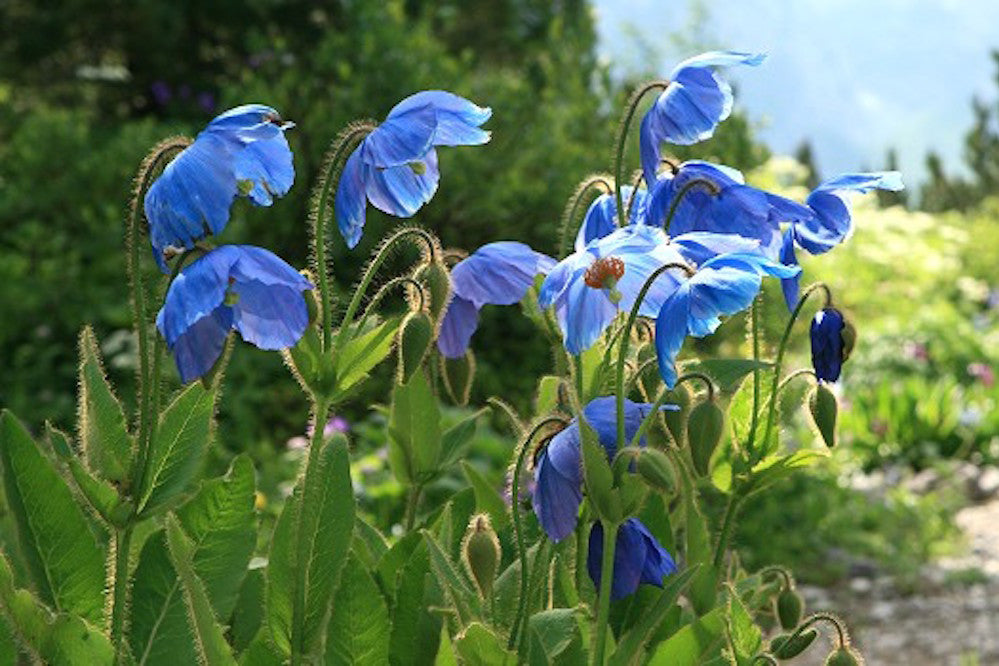Meconopsis x sheldonii ambig.
Approx. 0.5 litre pot
About this cultivar:
Meconopsis x sheldonii ambig.is the hybrid created when M. baileyi is crossed with M. grandis, either species being the pollen or seed parent. The name M. x sheldonii is well known to Meconopsis enthusiasts and is often encountered in books, articles, nursery catalogues and seed-lists. There is evidence that this hybrid occurred independently in the early 1930s in several gardens as widely separated as in the south of England and in Scotland. The first instance recorded was by William George Sheldon in 1934. It arose spontaneously in his garden at Oxted in Surrey, where the Nepal form of M. grandis (the seed parent) was growing near M. baileyi (the pollen parent). It was described and named by George Taylor in 1936, and given an Award of Merit in 1937 by the Royal Horticultural Society.
Since the naming of Meconopsis x sheldonii in 1936, it has been all too often misapplied, being given to a number of clearly (to the experts) different plants. As a consequence, even the experts are unsure whether the plant introduced by W.G. Sheldon still exists. Meconopsis.org suggest M. x sheldonii true form is synonymous with the cultivar now named M. 'Bobby Masterton'.
We’re pretty certain we have a sterile cross! Whether it is M. Bobby Masterton’ or not we’re not too sure. Whatever it is, it is sterile and it is beautiful! Looks a lot like M. 'Lingholm' to me.
- Position: Full sun, partial shade
- Soil: Almost any soil, grows well in Ballyrobert
- Flowers: April, May, June
- Other features: Woodland Plant, Dappled Shade or Full Shade Loving
- Hardiness: Fully hardy, grows well in Ballyrobert
- Habit: Clump forming
- Foliage: Deciduous
- Height: 60 - 90 cm (2 - 3 ft)
- Spread: 30 - 60 cm (1 - 2 ft)
- Time to full growth: 2 to 5 years
- Plant type: Herbaceous Perennial
- Colour: Green, blue
- Goes well with: Woodland, fern, hosta
About this genus:
Meconopsis is a genus of flowering plants in the poppy family (Papaveraceae). It was first described by French botanist Viguier in 1814 who named it as poppy-like (greek mekon = poppy, opsis = alike). The species have attractive flowers and have two distinct ranges. A single species, Meconopsis cambrica (Welsh poppy), is indigenous to England, Wales, Ireland, and the fringes of Western Europe, although recent studies suggest that it does not belong in the genus! The other 40 or so (depending on classification) species are found in the Himalayas. Within the Himalayan types there is much debate as to what constitutes a particular species as many readily hybridise with each other and produce viable seed. It is likely that some individually named species are in fact a single species but with an under-appreciated morphological diversity. So please don't complain if things are labelled 'wrong'!
Most of the Meconopsis we grow in our garden are the blue Himalayan types - but we do have a few others. Nearly all of them are in full to partial shade in soil that is not too dry or wet - which is pretty much the how they do best.


